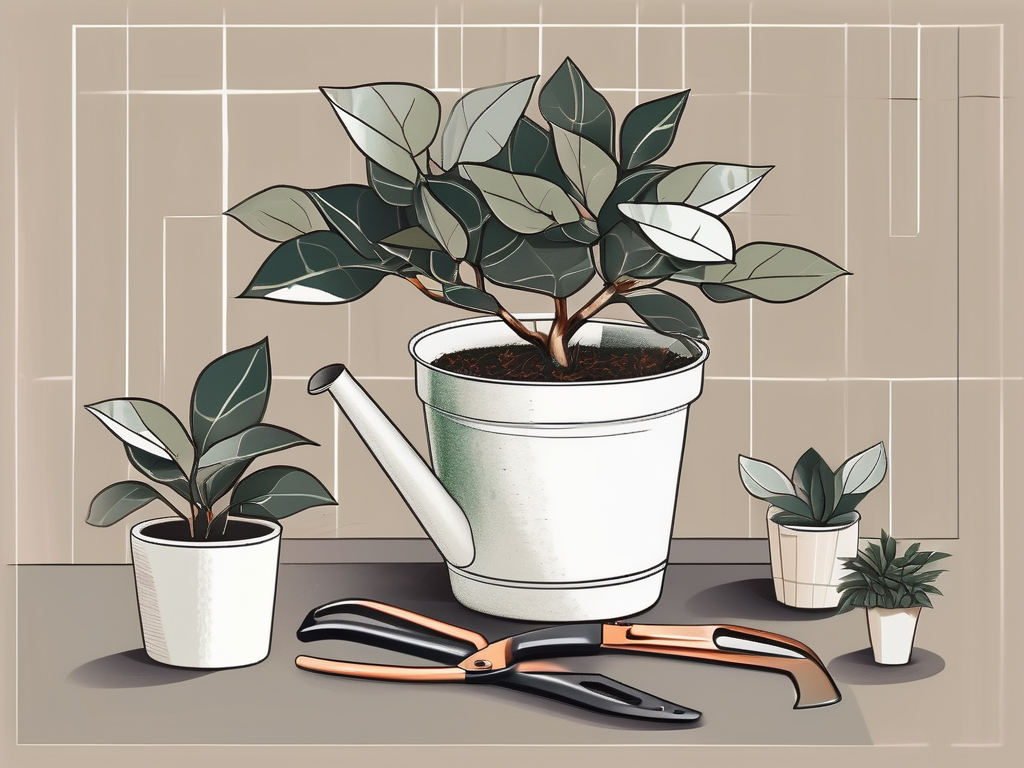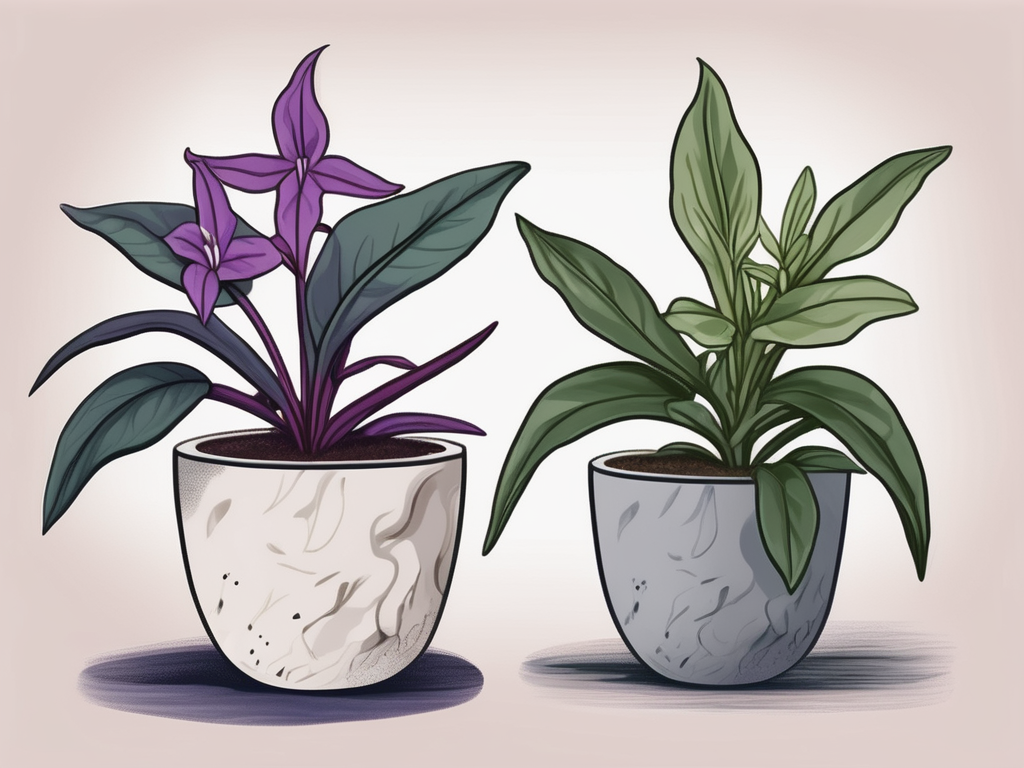
The Ficus Variegata, with its stunning, variegated leaves, is a true showstopper in any home. Whether you're a seasoned plant parent or just beginning your green-thumbed journey, this plant offers a delightful challenge that rewards patience and care. Its unique blend of green and cream leaves can brighten up any corner, making it a favorite among plant lovers.
In this article, we’ll cover everything you need to know about nurturing your Ficus Variegata. From choosing the right spot in your home to dealing with common challenges, we’ll provide the guidance you need to help your plant thrive. So, grab your gardening gloves and let’s get started on creating a lush, welcoming space with the Ficus Variegata!
Choosing the Right Spot
Finding the perfect spot for your Ficus Variegata is like matchmaking—there’s a little trial and error, but when you find the right location, magic happens. These plants love bright, indirect light, which mimics their natural environment under the canopy of tropical forests.
If you notice the leaves starting to lose their vibrant colors, it might be a sign that your plant is not getting enough light. On the flip side, too much direct sunlight can cause the leaves to scorch. A spot near an east-facing window is often ideal, as it provides morning light that isn’t too intense. If your home has only south or west-facing windows, consider using a sheer curtain to diffuse the light.
Temperature is another consideration. Ficus Variegata prefers temperatures between 60°F and 75°F. They don’t appreciate sudden temperature changes, so keep them away from drafts or heating vents. If you’re comfortable in a room, chances are your plant will be too!
Soil and Potting
Soil might not be the first thing you think about when caring for a plant, but it plays a crucial role in the health of your Ficus Variegata. This plant prefers well-draining soil. A mix designed for indoor plants or a blend of potting soil, perlite, and bark can provide the right balance of nutrients and drainage.
When potting your Ficus Variegata, choose a container with drainage holes to prevent water from pooling at the bottom. Sitting in water can lead to root rot, which is a common issue for many houseplants. If you're like me and can't resist a beautiful pot without holes, consider double potting—placing your plant in a smaller pot with drainage inside your decorative pot.
Repotting should generally be done every one to two years, depending on the growth rate of your plant. When you notice roots poking out of the drainage holes or if the plant seems to have slowed its growth, it might be time for a new home. Choose a pot that is one to two inches larger in diameter to give your plant room to grow.
Watering Wisely
Watering can be a tricky aspect of plant care, especially for Ficus Variegata. These plants prefer their soil to dry out slightly between waterings. A good rule of thumb is to stick your finger about an inch into the soil. If it feels dry, it’s time to water. If it still feels moist, give it a few more days. This method helps prevent overwatering, which can lead to root rot.
The amount of water can vary depending on the season. During the growing season (spring and summer), your plant will need more frequent watering. In the fall and winter, when growth slows, you can reduce the frequency. Remember, it's always better to underwater slightly than to overwater.
Using room-temperature water is another small but significant detail. Cold water can shock the roots, while hot water can damage them. Let your tap water sit out for a day to let chlorine evaporate, or use filtered water to keep your Ficus Variegata happy.
Fertilizing Your Ficus
Fertilizing is like giving your plant a vitamin boost. It helps promote healthy growth and keeps those gorgeous leaves vibrant. For Ficus Variegata, a balanced liquid fertilizer applied every four to six weeks during the growing season is ideal.
Make sure to dilute the fertilizer to half the recommended strength to avoid overfeeding, which can be harmful to your plant. Too much fertilizer can lead to salt buildup in the soil, which can damage the roots and affect the plant’s overall health.
In the cooler months, when the plant’s growth slows, you can cut back on fertilizing. This rest period helps the plant conserve energy and prepare for the next growing season. Always follow the instructions on your fertilizer package, and when in doubt, err on the side of caution with less rather than more.
Pruning and Maintenance
Pruning your Ficus Variegata is like giving it a little spa day. It’s a chance to remove any dead or damaged leaves and help shape the plant. Regular pruning encourages new growth and can prevent your plant from becoming too leggy or overgrown.
Use sharp, clean scissors or pruning shears to make clean cuts. Remove any yellowing or brown leaves, as well as any stems that seem to be growing in an odd direction. If you want to shape your plant, think about the overall look you’re going for and trim accordingly.
Pruning is also the perfect time to check for any signs of pests or disease. Look under the leaves and along the stems for tiny bugs or webbing. Catching these issues early can save your plant from more significant problems down the line.
Dealing with Pests
Even the most diligent plant parent can encounter pests. The most common pests that affect Ficus Variegata are spider mites, aphids, and mealybugs. They can cause leaves to yellow and drop, and if left unchecked, can seriously harm your plant.
If you spot any pests, don’t panic. There are several ways to tackle these unwelcome visitors:
- Manual Removal: Use a damp cloth to wipe the leaves and remove pests manually.
- Neem Oil: A natural pesticide, neem oil can be sprayed on the affected areas to deter pests.
- Insecticidal Soap: Available at most garden centers, this is another effective way to deal with pests.
Regularly inspecting your plant and keeping it clean can prevent many pest problems. If you do need to use a treatment, make sure to follow the instructions carefully and keep an eye on your plant’s response.
Troubleshooting Common Problems
Even with the best care, you might run into some common issues with your Ficus Variegata. Here are a few to watch out for and how to address them:
- Leaf Drop: This can be caused by sudden changes in light or temperature, overwatering, or underwatering. Check your plant’s environment and watering schedule to identify the cause.
- Yellow Leaves: Often a sign of overwatering, yellow leaves can also indicate a need for more light. Adjust your care routine accordingly.
- Browning Edges: This can happen if the air is too dry. Consider increasing the humidity around your plant with a pebble tray or humidifier.
Remember, plants are living things, and they can have off days just like us. A bit of patience and a little detective work can usually get things back on track.
Creating a Plant-Friendly Space
Part of the joy of having houseplants is integrating them into your home’s decor. Ficus Variegata, with its striking leaves, can serve as a stunning focal point. Consider placing it in a room where its variegation can be appreciated, like a living room or dining area.
Pairing your Ficus with complementary plants can create a cohesive look. Consider plants with solid green leaves to contrast with the variegation, or add a few trailing plants for a more dynamic arrangement. Adding plants at different heights can also add interest and dimension to your space.
Consider the pot as part of your decor. A chic, modern pot can elevate the look of your plant and tie together the style of your room. Whether you opt for a minimalist look or something more eclectic, your Ficus Variegata can be both a plant and a piece of art.
Final Thoughts
Caring for a Ficus Variegata is a rewarding experience that can bring a touch of nature's beauty into your home. With the right care, you can enjoy its vibrant leaves and unique appearance for years to come. Remember to pay attention to light, water, and temperature, and don’t be afraid to prune and troubleshoot when necessary.
At Cafe Planta, we’re passionate about helping you create a thriving plant collection. If you have questions or need advice, don’t hesitate to email us or reach out on Instagram. Whether you’re an experienced plant parent or new to the plant world, we’re here to support your journey and share our love of plants with you.
























